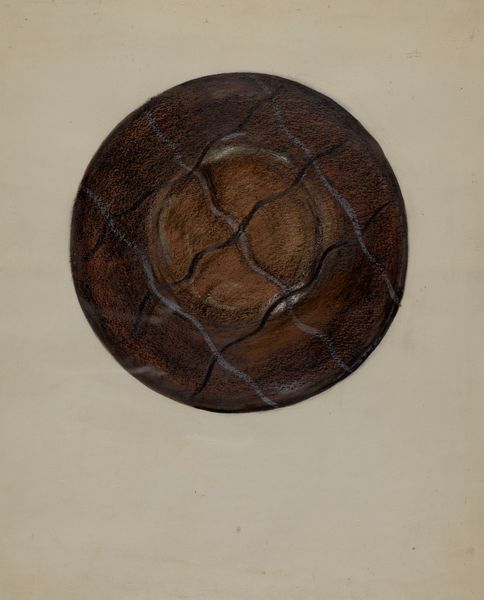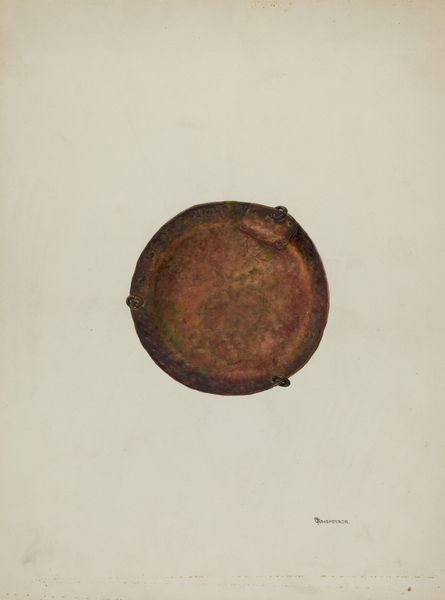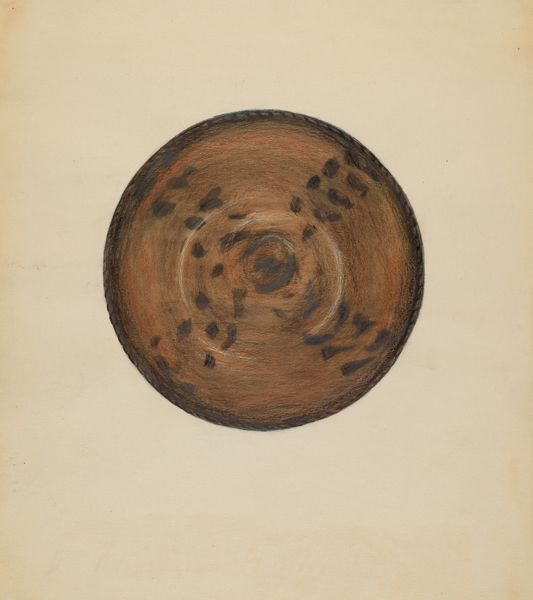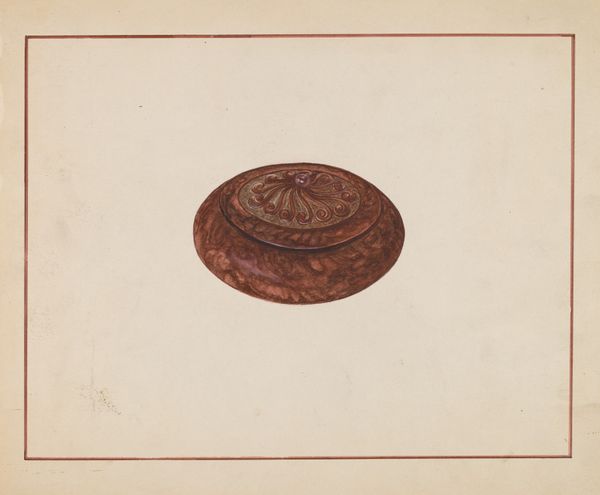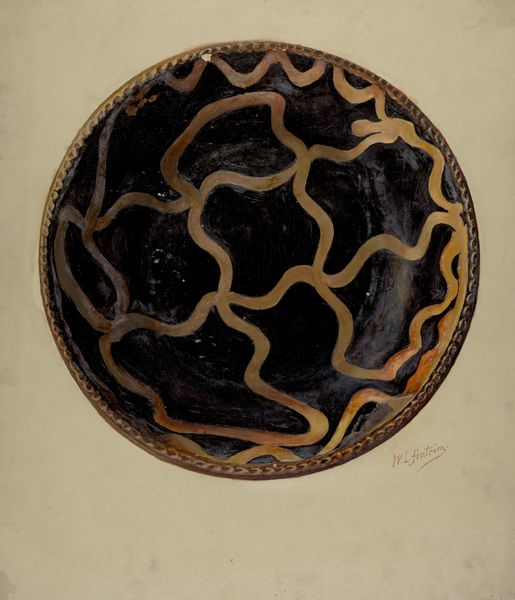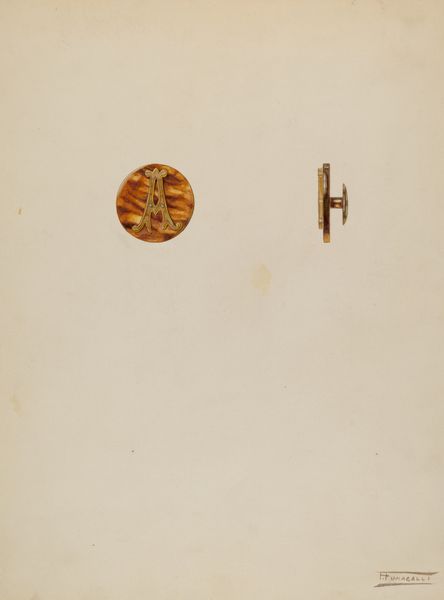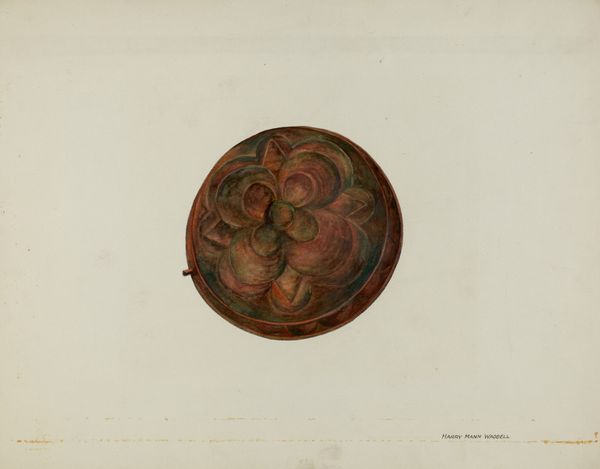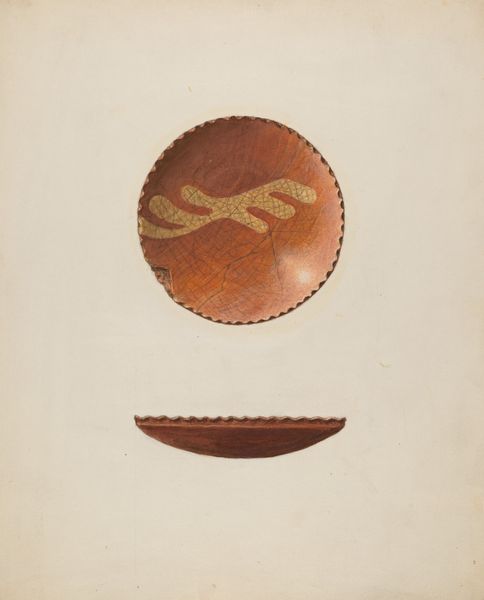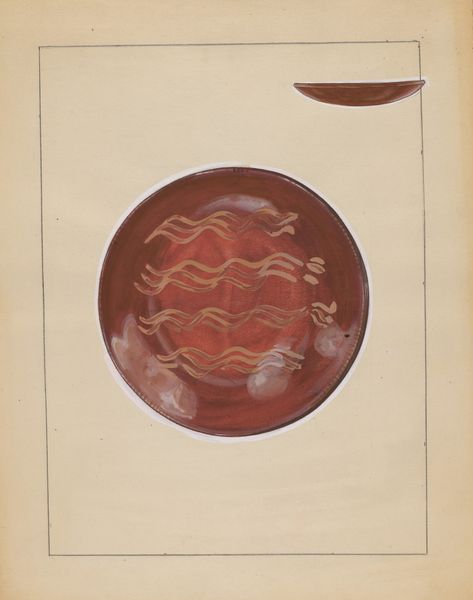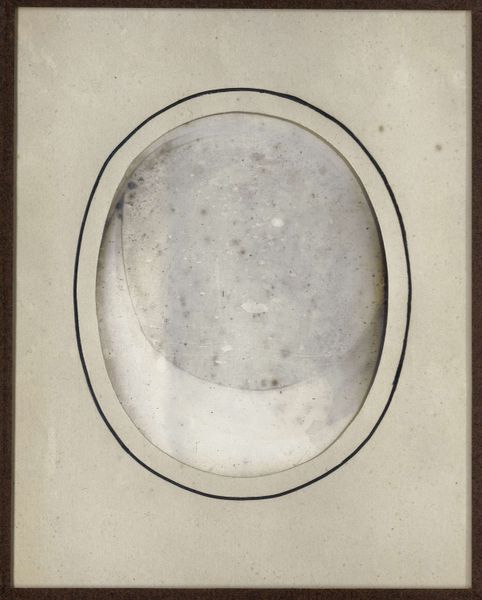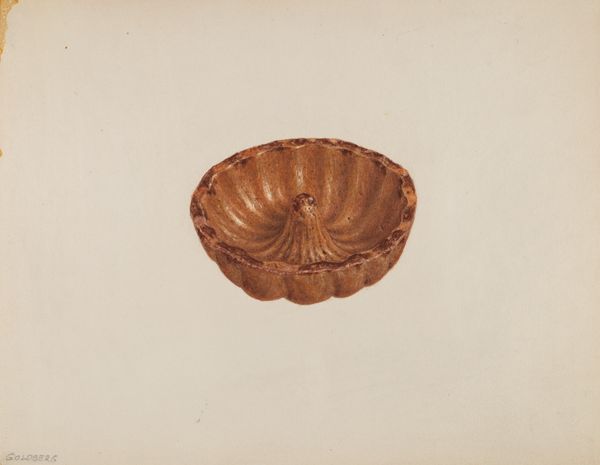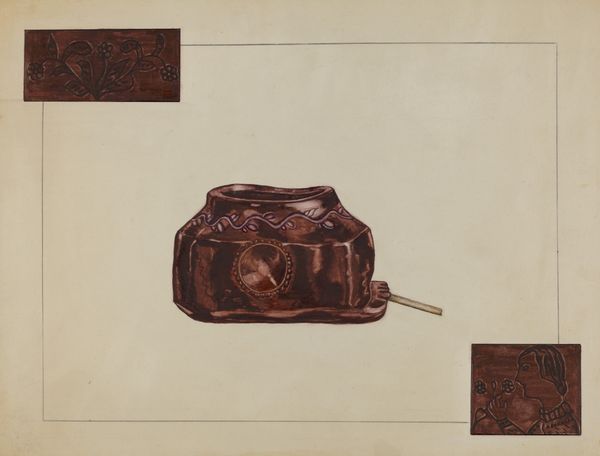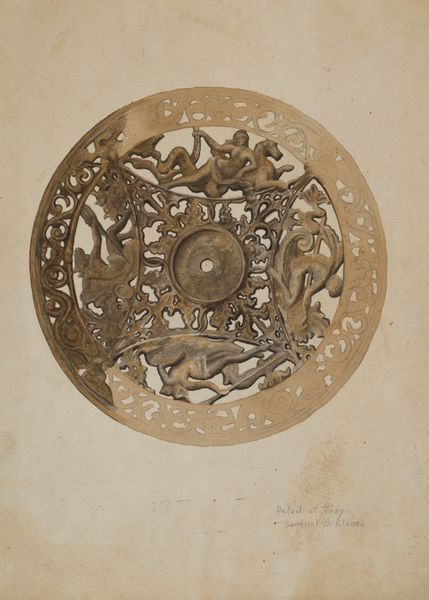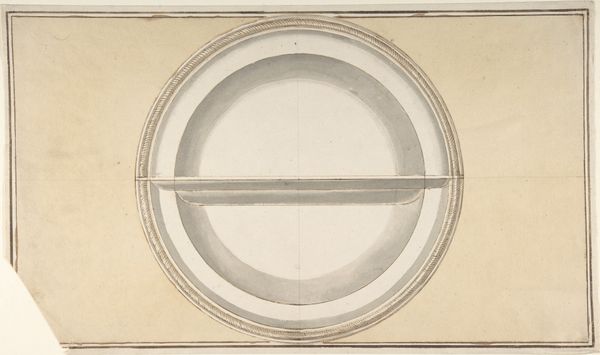
drawing, watercolor
#
drawing
#
water colours
#
watercolor
#
watercolour illustration
#
decorative-art
#
watercolor
#
realism
Dimensions: overall: 22.9 x 29.8 cm (9 x 11 3/4 in.) Original IAD Object: 49" in diameter; 23" high
Copyright: National Gallery of Art: CC0 1.0
Curator: Let's discuss this work from about 1936 titled, "Pa. German Plate," a watercolor drawing. Editor: It feels surprisingly delicate. There’s something quiet and almost melancholic about the muted palette and the unassuming subject. Curator: Precisely! The drawing is deceptively simple in its construction. Note the circular form of the plate dominating the composition. Above it, we see another flattened ellipse portraying the same plate, yet in cross-section, to indicate depth. These forms operate in tandem, creating a self-contained system within the visual field. Editor: This piece reads as a meditation on domesticity and material culture. The Pennsylvania German community, historically, placed enormous importance on handcrafted objects, turning the everyday into something precious. The choice of the plate could be interpreted as a symbol of hearth and home, sustenance, and perhaps also of tradition and a shared cultural identity. Curator: Certainly, but I find the application of color just as significant. The artist uses light and shadow to emphasize its form. It brings to mind aspects of trompe l'oeil in the shading and outlining of the main shape. This creates the effect of a very common, ordinary object floating in front of the background—and we see that from the shadow work underneath the plate itself. Editor: What does it mean to flatten something, memorialize it with art? Watercolors lend themselves to creating images of great vulnerability, perhaps speaking to a community struggling to maintain these very things represented in this illustration. After all, 1936 would have been an economically uncertain moment for the community. Curator: Yes, but I want to pull us back to the plate itself: to consider the grid of waving lines on the plate that suggest something almost textile in effect. Does it break apart its simple construction, complicate it perhaps? Editor: Perhaps it humanizes it, renders the utilitarian decorative, the quotidian poetic. There is something lovely and, dare I say, subtly subversive about lifting this very modest object into a space of reverence. Curator: Ultimately, this watercolor achieves an engaging study through its simple depiction of what is an otherwise quite simple object. Editor: Absolutely—and it challenges us to look deeper, revealing the histories imbued in ordinary objects, and questioning our relationship to both art and the artifacts that make up our daily lives.
Comments
No comments
Be the first to comment and join the conversation on the ultimate creative platform.
